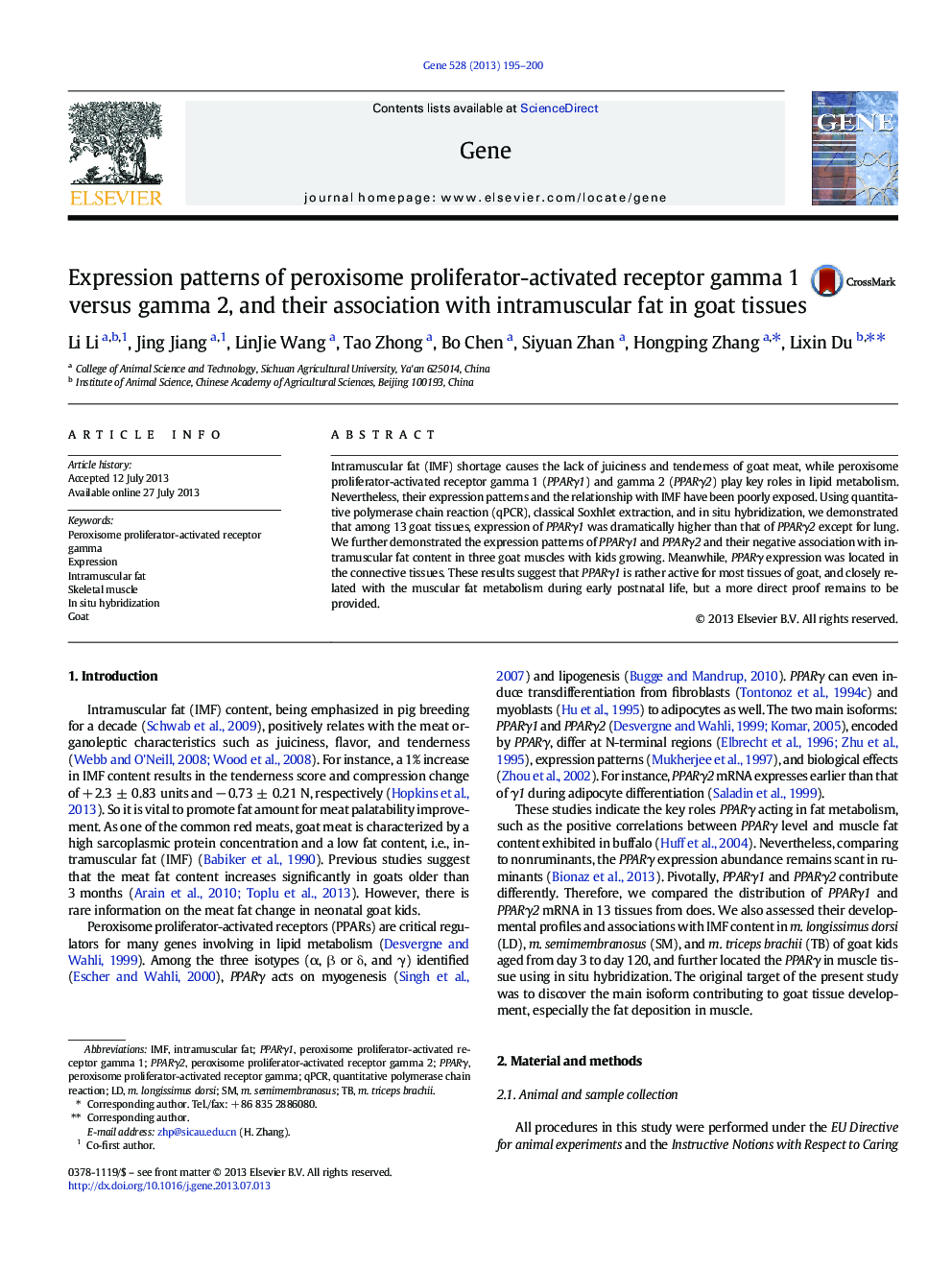| Article ID | Journal | Published Year | Pages | File Type |
|---|---|---|---|---|
| 2817085 | Gene | 2013 | 6 Pages |
•PPARγ1 was more active than PPARγ2 in most goat tissues.•PPARγ1 and PPARγ2 were upregulated in developmental goats aged from 3 to 120 days.•IMF content decreased in skeletal muscles of goats between 3 and 120 days old.•Levels of PPARγ1 and γ2 mRNA negatively associated with IMF content in muscles.
Intramuscular fat (IMF) shortage causes the lack of juiciness and tenderness of goat meat, while peroxisome proliferator-activated receptor gamma 1 (PPARγ1) and gamma 2 (PPARγ2) play key roles in lipid metabolism. Nevertheless, their expression patterns and the relationship with IMF have been poorly exposed. Using quantitative polymerase chain reaction (qPCR), classical Soxhlet extraction, and in situ hybridization, we demonstrated that among 13 goat tissues, expression of PPARγ1 was dramatically higher than that of PPARγ2 except for lung. We further demonstrated the expression patterns of PPARγ1 and PPARγ2 and their negative association with intramuscular fat content in three goat muscles with kids growing. Meanwhile, PPARγ expression was located in the connective tissues. These results suggest that PPARγ1 is rather active for most tissues of goat, and closely related with the muscular fat metabolism during early postnatal life, but a more direct proof remains to be provided.
